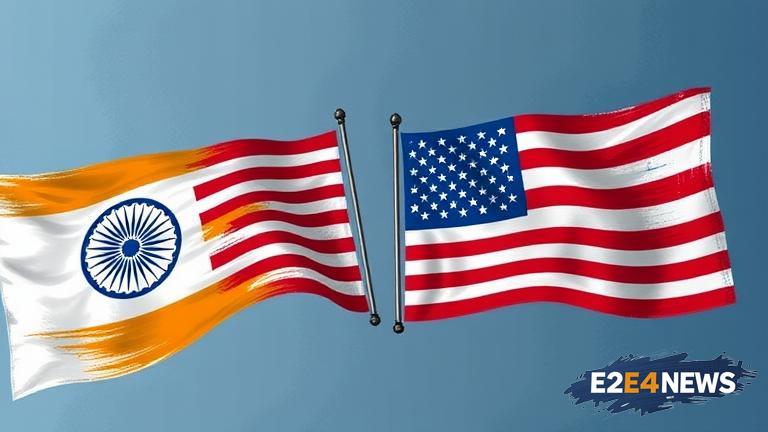The recent decision by the US to impose a 25% tariff on Indian goods has sent shockwaves through the global trade community, with many experts expressing concerns about the potential impact on bilateral trade relations. The tariff hike, which affects a wide range of Indian products, including textiles, chemicals, and pharmaceuticals, is seen as a major setback for Indian exporters. However, trade experts believe that this move also presents opportunities for Indian businesses to diversify their export markets and reduce their dependence on the US. According to experts, India can explore new markets in Southeast Asia, Latin America, and Africa, where there is a growing demand for Indian products. Additionally, India can also focus on increasing its exports to countries with which it has existing trade agreements, such as the ASEAN region and the European Union. The Indian government has already started taking steps to promote exports to these regions, including providing incentives and subsidies to exporters. Moreover, the government is also working on improving the country’s trade infrastructure, including ports and logistics, to make it easier for businesses to export their products. Despite these efforts, there are concerns that the tariff hike could have a negative impact on the Indian economy, particularly on the country’s manufacturing sector. The sector, which is already facing challenges due to the COVID-19 pandemic, could see a decline in exports and a subsequent loss of jobs. However, experts believe that the Indian government can mitigate these effects by providing support to the manufacturing sector, including providing financial assistance and promoting investment in the sector. The US decision to impose tariffs on Indian goods is seen as a part of its broader trade policy, which aims to reduce its trade deficit with other countries. The US has already imposed tariffs on goods from several other countries, including China, Mexico, and Canada. The move has sparked a global trade war, with many countries retaliating against the US by imposing their own tariffs on American goods. In this context, the Indian government needs to carefully navigate its trade relations with the US, while also exploring new opportunities for trade and investment with other countries. The government has already started engaging with the US administration to resolve the trade disputes and find a mutually beneficial solution. Meanwhile, Indian businesses are advised to diversify their export markets and reduce their dependence on the US. They can also explore new opportunities in the domestic market, including increasing their focus on the Indian consumer. The Indian consumer market is one of the largest in the world, with a growing middle class and an increasing demand for consumer goods. By focusing on the domestic market, Indian businesses can reduce their dependence on exports and mitigate the effects of the tariff hike. In conclusion, the US imposition of a 25% tariff on Indian goods is a major challenge for Indian exporters, but it also presents opportunities for diversification and growth. The Indian government and businesses need to work together to promote exports, improve trade infrastructure, and reduce dependence on the US. With the right strategies and policies, India can navigate the challenges posed by the tariff hike and emerge as a major player in the global trade landscape. The country’s economic growth, which has been impressive in recent years, is expected to continue, driven by a combination of domestic demand and exports. The Indian government’s efforts to promote trade and investment, including the ‘Make in India’ initiative, are expected to bear fruit in the coming years. As the country continues to grow and develop, it is likely to play an increasingly important role in global trade, and the US decision to impose tariffs on Indian goods may ultimately prove to be a blessing in disguise. The tariffs may prompt Indian businesses to become more competitive and innovative, which could lead to increased exports and economic growth in the long run. Furthermore, the Indian government’s response to the tariff hike, including its efforts to promote exports and improve trade infrastructure, may also lead to increased economic cooperation with other countries, including those in the ASEAN region and the European Union. This could lead to a more diversified and resilient economy, which is better equipped to withstand external shocks. Overall, the US imposition of a 25% tariff on Indian goods is a challenge that India can overcome, and it may ultimately lead to increased economic growth and development. The country’s trade experts and businesses are confident that India can navigate the challenges posed by the tariff hike and emerge as a major player in the global trade landscape. With the right strategies and policies, India can reduce its dependence on the US and increase its exports to other countries, including those in Southeast Asia, Latin America, and Africa. The Indian government’s efforts to promote trade and investment, including the ‘Make in India’ initiative, are expected to continue, and the country is likely to remain a major player in the global trade landscape for years to come.
